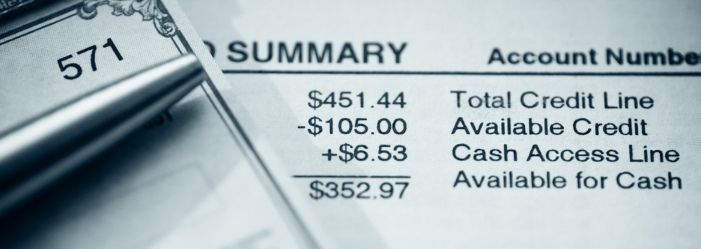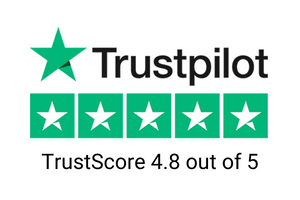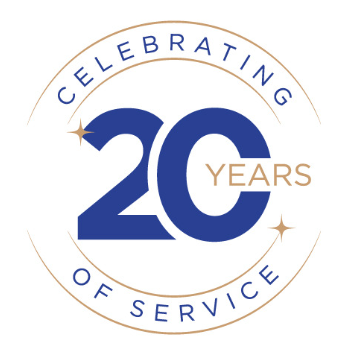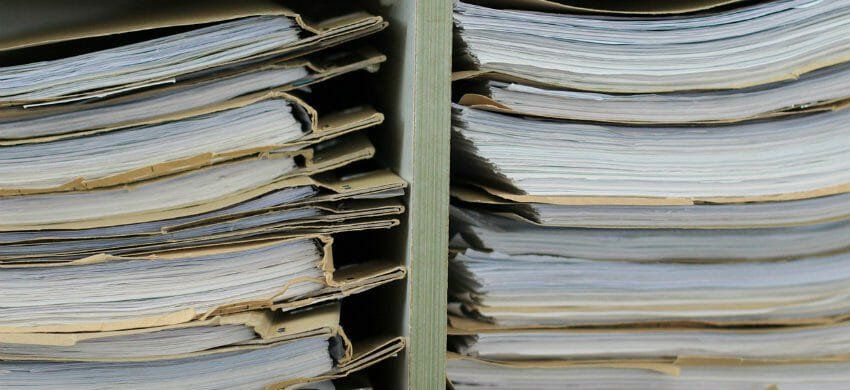Last Updated: March 29, 2024
How Will You Keep Your Credit Records?

Disclaimer: We are not qualified legal or tax professionals and are not giving advice. Always speak with a qualified professional before making any legal or financial decisions.
In today's digital age, managing financial paperwork, from credit card statements to bank records can feel overwhelming. Yet, knowing how long to retain these documents is crucial for both legal compliance and personal financial health.
Whether you're learning the complexities of tax deductions or aiming to declutter your filing cabinet, understanding the lifespan of these documents is essential.
Inspired by leading financial advice, our guide simplifies this process, offering clear, actionable insights to help you make informed decisions about document retention, embracing both traditional and digital formats for a streamlined financial management experience.
For a straightforward approach, click here to speak to our debt specialist for a free consultation.
How to Organize Your Bills
Get three file boxes or a three-drawer filing cabinet and a stack of file folders. Sort the bills into biller and year. Check through each bill to see if it contains tax-related purchases. One is the current year, one is shred by date, and one is tax-related. While some of the records only need to be kept for one month, you’ll keep them for slightly longer (unless you like doing paperwork).
Current Year
In the current year box, you’ll have files for this year’s tax information, credit card statements, insurance policies, bank statements, pay stubs, investment statements, mortgage paperwork, medical bills, financial records, and utility bills. You’ll want to label them clearly!
- Credit card statements and receipts
- Car insurance policy
- Home insurance policy
- Bank statements and slips
- Pay stubs
- Investment statements
- Mortgage statements
- Home improvement receipts
- Medical bills
- Utility bills
- Retirement plan statements
- Personal records (these should be kept in a fireproof box)
- Marriage, divorce, adoption, birth, wills, paid mortgages, keep until death
- Loan receipt payoffs, keep 7 years
- Shopping receipts
- Cash receipts – shred as desired
- Credit card receipts – match to bills and shred
- Large ticket items – attach receipts to user manual or warranty information
As you sort through those piles of bills and shoe boxes of receipts, place them in the correct file.
Shred Box
In the shred box, you will have roughly the same files with a label along the lines of “Name of Credit Card Statement, 2019, shred 2021” etc.
- Credit card statement, 2019, shred 2021
- Insurance policies, shred as desired
- Bank Statements, 2019, shred 2021
- Pay stubs, shred as desired
- Investment statements, 2019, shred 2021
- Medical Bills, 2019, shred 2021 unless planning to deduct
- Utility Bills, 2019, shred 2021 (if you have a home business, you will keep these)
- Retirement plan quarterly statements, 2019, shred 2021
- Paid Loans, 2019, shred 2027
Unless you own a serious shredder, you’ll probably find it easier to shred all your documents once a year. Do not throw away these items. They contain enough personal information for a thief to steal your identity.
Taxes Box
In the Taxes box, you will place your filed tax returns and all paperwork associated with them. You’ll also need a file titled W2s and others for past tax filing and related paperwork.
- Tax receipts, 2019, shred 2027
- Bank statements related to taxes
- Credit card related to taxes
- W2s (remove each year and place into W2 save file)
- Medical bills if planning to deduct
- W2 file, do not shred
- Investment annual statements, shredded after the sale of the investment
- Mortgage paperwork, shredded seven years after the sale of the house
- Home Improvement receipts, shred seven years after the sale of the house
- Mortgage statements, shredded after the sale of the house
- Annual Summaries, shredded after retirement
- Roth IRA contributions, keep to prove tax status
Now that you have everything set up and you are sorting through your receipts, let’s take a look at how to handle each file individually.
How Long to Keep Credit Card Statements
Technically, you only need to keep most credit card statements for 60 days, that’s according to Investopedia. If you are incredibly organized, shred them after 60 days. If your statements have tax-related purchases on them, you will keep them for 7 years.
Each month match your monthly statements against your receipts and for accuracy. Separate the statements and receipts into three categories. One is statements and receipts that are tax-related; the second is receipts for miscellaneous items, and the third is all other statements.
Place the first pile into the labeled file in the tax box. Place the second into the shred file in the shred box. Place the third into a labeled file in the current year box. When the current year ends, place that file in the shred box.
How Long to Keep Tax Returns and Tax Receipts
Keep your tax returns for seven years. The IRS can audit for good faith errors up to three years, and six years if they think you have underreported your income, or unlimited if investigating fraud.
Keep your W-2s until you begin earning Social Security.
Place the tax returns in the tax box. Shred then in 7 years, so tax records from 2019 are shredded in 2027.
How Long to Keep House and Car Insurance Policies
Shred the old policies when you receive new policies. Place in the current year box. Move to the shred box when you get a new policy.
How Long to Keep Bank Statements
- Keep your paper bank statements for 1 year unless they contain tax-related information, then 7 years.
- Keep your paperless statements for 7 years – they don’t take up space, except on your hard drive, and you may want them for a quick reference.
- You can shred ATM receipts, deposit, and withdrawal slips after reconciling.
- Every month, reconcile the slips against the bank statements, then shred the slips. Separate paper statements into non-tax-related and tax-related. Place the tax-related ones into a labeled file in the tax box.
- Place the rest of the statements in the shred box and shred in one year (2019, shred 2021).
How Long to Keep Pay Stubs
- Keep your pay stubs for a year. Match them to W-2 and then shred them.
- Keep the pay stubs in a file in the current year box.
- When you receive the W-2, match them and then shred the pay stubs.
- Place the W2 in the tax box. Keep W2s until you begin collecting Social Security.
How Long to Keep Investment Statements
- Keep the yearly summaries for as long as you own the security, plus 7 years.
- This provides you with a capital gain or loss for your tax returns.
- Monthly statements, you can shred them monthly or after one year.
- Place monthly statements in the current box.
- After the year has ended, place them in the shred box labels “Investment statements 2019, shred 2021.”
How Long to Keep Mortgage Statements
- Keep all your paperwork regarding the purchase of your home until you sell the house plus 7 years.
- Keep all your home improvement paperwork and receipts until you sell the house plus 7 years.
- Keep any of the mortgage statements until you sell the house, then shred them.
How Long to Keep Medical Bills
- Keep your medical bills for one year unless you plan to deduct them.
- Start in the current box, move them to the shred box at the end of the current year, then shred them at the end of the next year.
- If you plan to deduct them, place them into the tax file.
How Long to Keep Financial Records
- Keep your retirement plan quarterly statements for one year.
- Keep the annual summaries until retirement.
- Keep your Roth IRA contributions until retirement to prove tax status.
- Store them in shreds on the schedule.
How Long to Keep Utility Bills
- Hold onto your utility bills for a maximum of one year unless you have a home business.
- If you have a home business, store them in the tax file for that tax year.
How Long to Keep Personal Records
Safely store any of your records like wills, marriage and divorce certificates, birth and death certificates, automobile titles, security ownership documentation, mortgage and loan paperwork, passports, etc. in a fireproof box (hard-earned hint: place some desiccants from pill bottles or frozen items in the file box!
The box can retain moisture and mold like passport paper.) Keep these these documents until you die. Your heirs will either shred or use them to prove a will.
How Long Should You Keep Receipts
- Keep your tax-related receipts for seven years.
- Keep all the home improvement receipts like the sale of the house.
- Keep your large ticket items until returned or you need for the warranty.
- Shred all other documents after reconciling with bank statements or credit cards.
What Is the Safest Way to Dispose of Old Bank Account Statements?
The single safest way to dispose of old documents is to cross-shred them. Cross shredding not only cuts the documents into strips but also cuts them into minuscule pieces of paper. It is also sometimes worth the extra expense of hiring a service to turn your personal information into confetti.
Banks and credit unions may offer an annual document shredding service. Hard drives and other computer-related storage devices can also be shredded. Even if you erase a hard drive, a knowledgeable thief may be able to resurrect the data.
Keeping Your Financial Information Secure
When storing credit card statements and other sensitive financial documents, it's important to keep your personal information secure. For digital copies, use password protection, encryption, or a password manager like LastPass to restrict access. Store files on a personal computer or external hard drive rather than a public network.
For paper statements, invest in a safe, lockbox, or filing cabinet that locks for storing documents long-term. Keep it in a private, secure location in your home. A fireproof safe adds another layer of protection.
No matter what format you choose, be sure to properly dispose of financial statements when it's time. The best way to prevent identity theft is to shred the documents before throwing them out.
Organizing Tax-Related Receipts
Financial statements related to taxes, medical expenses, and home improvements should be kept for years after filing. Here are some tips:
- Tax receipts: Store receipts alongside paper returns or tax documents for 7 years. This includes records of business expenses, charitable donations, credits/deductions, and documents supporting your income.
- Medical receipts: Keep medical bills and statements for at least 3 years after the date of service. You may be able to claim these costs well after the fact.
- Home improvement receipts: Hold on to any home repair receipts for 7 years after selling the improved property. Costs like renovations can be deducted when determining capital gains.
Scan or photocopy receipts before filing to have a digital backup. Organize saved files on your computer by year and expense category. This will help you quickly locate records if needed.
Useful Tools for Managing Finances
Taking advantage of online tools and apps can make organizing financial paperwork much easier.
- Budgeting apps like Mint, automatically track spending and cash flow across multiple accounts and credit cards. This gives you a big-picture view of where your money goes.
- Scanner apps like Evernote Scannable to quickly digitize important receipts and documents with your smartphone. This helps reduce paper clutter.
- File storage services like Google Drive for safely backing up digital statements and records.
- Expense trackers like Concur automatize business expense reporting. Easily capture receipts and mileage to simplify filing taxes.
- Password managers like LastPass enable you to securely store login credentials for all your financial accounts. Logging in is quick and easy with one master password.
Give these tools a try to see if they can help streamline your financial record-keeping! Reach out with any other questions.
FAQs
Conclusion
Keeping accurate financial records is important for budgeting, taxes, avoiding fraud, and more. While the task may seem daunting, following document storage best practices can make the process much more manageable.
The key is to store statements securely, organize them systematically, retain tax-related paperwork for 7 years, and properly dispose of sensitive material. Taking advantage of digital tools like scanners, password managers, and file encryption can streamline recordkeeping as well.
By leveraging available technologies and being mindful about categorizing important paperwork, getting control of your financial records is an achievable goal. Staying on top of documentation provides peace of mind and saves hassle down the road if records are ever needed to verify purchases, account for deductions, or monitor spending habits. With a personalized approach and steady consistency, maintaining personal financial archives can become routine.
Pacific Debt, Inc.
If you’d like more information on debt settlement or have more than $10,000 in credit card debt that you can’t pay, contact Pacific Debt, Inc. We may be able to help you become debt-free in 2 to 4 years. We have settled over $250 million in debt for our customers since 2002. Pacific Debt, Inc. is accredited with the Consumer Debt Relief Initiative (CDRI) and is an A+ member of the Better Business Bureau. We rate very highly in Top Consumer Reviews, Top Ten Reviews, Consumers Advocate, Consumer Affairs, Trust Pilot, and US News and World Report.
Alabama, Alaska, Arizona, Arkansas, California, Colorado, District of Columbia, Florida, Idaho, Indiana, Kentucky, Louisiana, Massachusetts, Maryland, Michigan, Minnesota, Missouri, Mississippi, Montana, North Carolina, Nebraska, New Mexico, New York, Oklahoma, Pennsylvania, South Dakota, Texas, Utah, Virginia, Wisconsin
* Other states can be connected to one of our trusted partners
*Disclaimer: Pacific Debt Relief explicitly states that it is not a credit repair organization, and its program does not aim to improve individuals' credit scores. The information provided here is intended solely for educational purposes, aiding consumers in making informed decisions regarding credit and debt matters. The content herein does not constitute legal or financial advice. Pacific Debt Relief strongly advises individuals to seek the counsel of qualified professionals before undertaking any legal or financial actions.
Reduce Your Credit Card Debt By Up to Half

BBB Reviews | 4.9/5.0 Rating









 Do Not Sell My Personal Information
Do Not Sell My Personal Information